

How to Write an Objective Summary (With Example)
Saving time and effort with Notta, starting from today!
Most weeks, I'm writing 8000+ words for my clients — and most of these times, I need to summarize the extra lengthy documents for my research. I'm only able to do that because I have a proper plan in place — from understanding how to write an objective summary to automating certain tasks using artificial intelligence.
I'll be honest: writing an objective summary of a press piece, document, or video is more difficult than one can imagine. You'll need to gather the important details, create a brief outline, and then finally start the writing process. You cannot talk about personal opinions, nor can you include non-essential details.
Here's how to write an objective summary with examples — with a clear roadmap so you don’t have to waste your precious hours.
What is an Objective Summary?
An objective summary is a short, meaningful text that describes the main thesis — along with the supporting statements related to any video, presentation, report, or other content. It's helpful for anyone who wants to read a concise, informative version of the long document (video, press release, or anything you name) — and then decide if they wish to read the document from start to end.
How to Write an Objective Summary?
Everyone knows the feeling of opening a lengthy document, staring at large blocks of text, and feeling like they're lost in words. Creating a summary gives the viewers — and you — a fair idea of what's more important in the document or video, what elements can be included or omitted, and a general overview of the whole piece.
So, how to write an objective summary without burning hours? Here's the process I follow — and you can tweak my process as needed or remove the steps that don't make sense to you. Remember, the only goal of an objective summary is to make your (and all your readers) job easier.
Read the Original Work
Carefully reading the original work will help you prepare the outline, help you understand what to include in the summary, and give you a detailed roadmap for writing an objective summary. Depending on the complexity of the document and its length, an objective summary can be as short as a few paragraphs or as big as one page.
Take Proper Notes
If you have any basic idea about writing summaries, you'll probably understand the importance of taking proper notes. Without a proper note-taking process, you'll be lost with so much information available in the document. I prefer taking notes in the form of brief bullet points so I can quickly refer to them when I sit for writing.
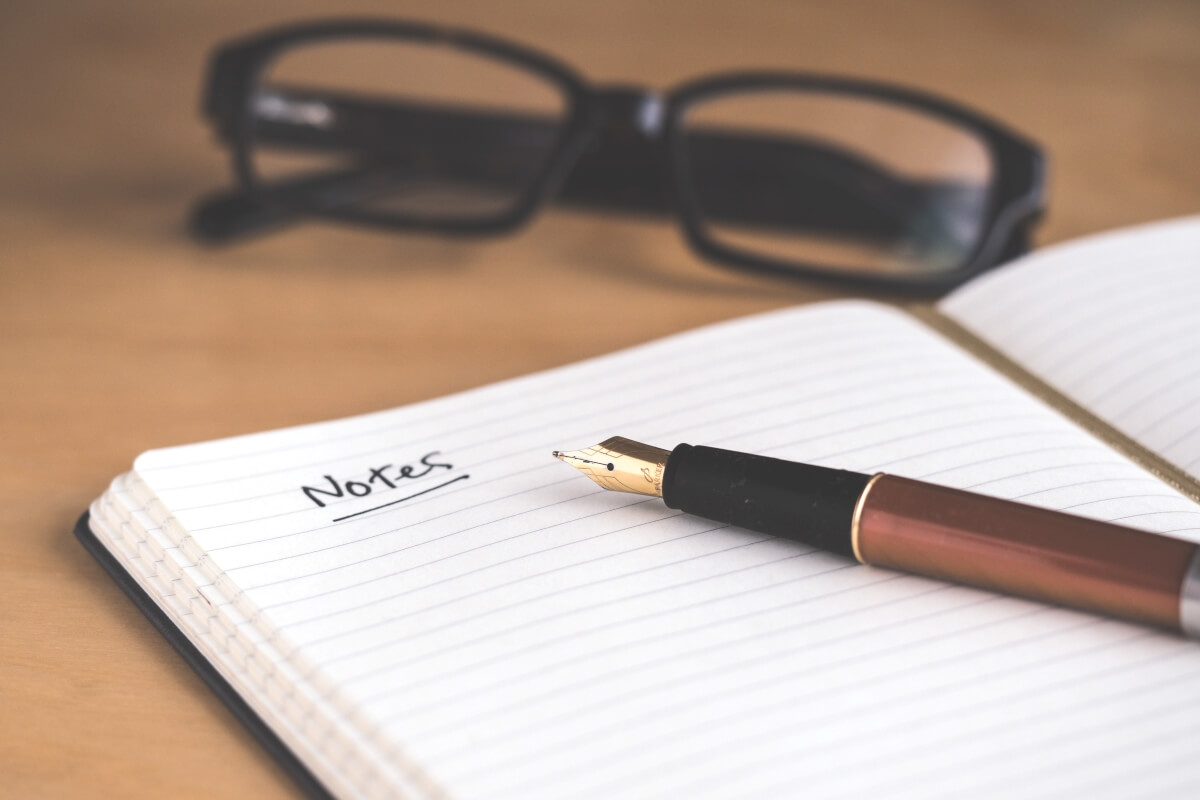
Start Writing in Your Own Words
Once you're done with reading and have created proper notes, the next question is how to start an objective summary. In this most important step, you have to extract only the main ideas that relate directly to the central thesis of the article. More importantly, focus on writing everything in your own words — while keeping it short, succinct, and straightforward.
Focus on Factual Statements
An important element of an objective summary is avoiding the use of your own opinions — and sticking only to the factual statements. If you want to make your objective summary worth reading, start with the core thesis in one sentence. A perfect, strong opening sentence will have three main elements: who is the speaker, what they are saying, and how they are saying it.
Add Key Points to Support the Statement
Remember, the opening statement can hold someone's attention — but the main body of the summary will include the supporting data. Generally, 1-3 supporting elements are enough to create a compelling summary.
Once I finish the objective summary, I read it through to see if there are any grammar or spelling errors — and, more importantly, if there's some important information left behind while summarizing. My reviewing and editing process is the last but most important step that always proves to be a game-changer.

Example of an Objective Summary
A summary and an objective summary are two very different things. While writing the summary: you don't have to be shy about the details or stating your opinions. Your aim is to provide readers with a comprehensive overview of the document you're summarizing. But that's different from an objective summary — where you can neither state your opinions nor there's a need to summarize all the details.
Here, I'll show (not tell) you one objective summary example — so you get some inspiration to write your own summary.
Be clear and start with the main idea . The first thing you'll need to include in the summary is the central idea or the main characters (in case you're summarizing a story).
Example : In Hamlet play, William Shakespeare reveals the main characters, such as Hamlet, Ophelia, and Laertes — and outlines the main plot of the play (that includes the investigation story of Hamlet finding who murdered his father and why.)
The next step is to share the supporting data that go hand in hand with the main plot. Pro tip: Don't add any unnecessary details that might not directly relate to the central idea.
Example : You can leave Guildenstern and Rosencrantz parts in Hamlet's objective summary.
While writing the objective summary, be as specific as you can — and ensure that the tone and voice of the summary reflect the idea of the main idea without sounding opinionated. If you are writing an objective or summary for resumes , you’ll need to highlight your skills and professional highlights in 2-3 sentences.
Tips for Writing an Objective Summary
Objective summaries aren't meant where you show your opinions — instead, it's the place where only the facts are recorded. An objective summary's purpose is to give the main idea about the story — by covering only the facts. Here, I've listed some more tips that'll ensure you're on the right track.
Record Only the Facts
Before I start writing the summary, I try to spend a few minutes carefully reading the document and noting down the facts (only). This step typically includes understanding the document's objective, formatting and tone, and any other important information that's necessary to nail the summary.
Use the AI Summarizer App
I find it easier to write an objective summary of the video once I have an accurate transcript ready. If you're planning to summarize any audio or video file, it's best to use an AI note-taking , transcribing, and summarizing app like Notta .
It's a powerful AI tool that can generate transcripts with 98.86% accuracy — which can then be summarized in different key chapters, action items, and an overview. What I really like about the Notta AI Summary Generator is its ability to do the job faster and better.
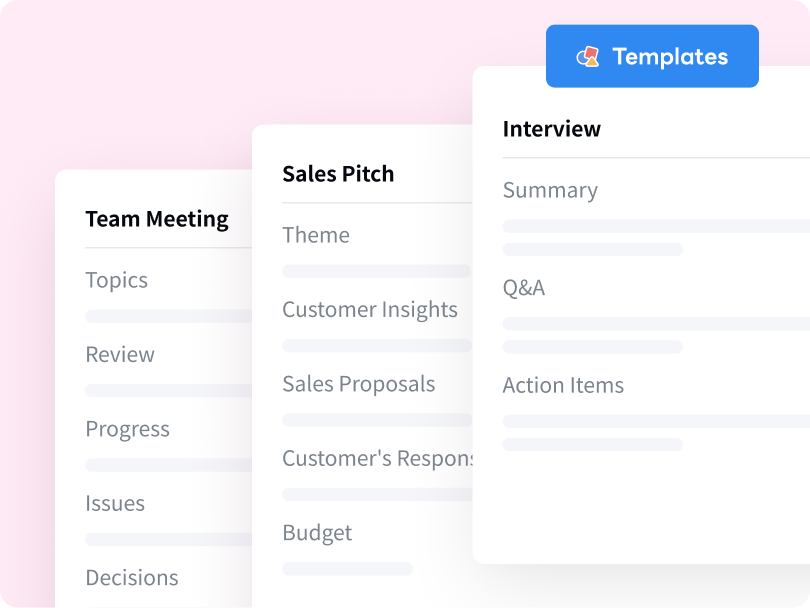
Simply select the summary template that best fits your needs, and watch as Notta transforms your raw notes into polished, concise summaries. Your time is precious – let Notta help you make the most of it.
Keep the Tone Professional
Building out a detailed outline of a document is a smooth ride from here. With a general direction to your piece and extracting the main ideas from the document, all that's left is to write the summary in a professional tone.
Try Notta - the best online transcription & summarization tool. Transcribe and summarize your conversations and meetings quickly with high accuracy.
Start for Free
How Long is an Objective Summary?
An objective summary should generally be one paragraph long — covering all the major points of the document. The word 'objective' here means something that's not influenced by one's personal opinions or feelings. While it should always be written in a short, concise format, it's not mandatory. Depending on the document you're summarizing, the length can range anywhere from one to a few paragraphs.
What are the 3 Components of an Objective Summary?
The three main components of an objective summary include the central idea (the main topic or idea of the document), the supporting ideas (the facts or details that support the central idea), and then the objective idea (or the pure facts without anyone's opinion). With these three ideas in mind, it's time to start writing the summary — no matter what document you're summarizing.
Key Takeaways
Writing an objective summary doesn't need to be an overwhelming task. With a little bit of planning and following the tips I have covered in this ' How to Write an Objective Summary ' guide, you can get started right away. The steps outlined in the article will make your summarizing process more efficient, less challenging, and smoother.
Of course, you can use AI summarizers like Notta to automate the tasks on this list — such as converting the speech to text and then summarizing it into meaningful content. With the help of this AI note-taking application, you can keep most of your work-related systems running smoothly — and objective summaries are no exception.
Chrome Extension
Help Center
vs Otter.ai
vs Fireflies.ai
vs Happy Scribe
vs Sonix.ai
Integrations
Microsoft Teams
Google Meet
Google Drive
Audio to Text Converter
Online Video Converter
Online Audio Converter
Online Vocal Remover
YouTube Video Summarizer
- Fireflies.ai Website
- Recruitment
- Productivity
- Remote Work
- Customer Story
- All Categories
- Fireflies.ai App
- Request Demo
What Is an Objective Summary + How to Write It

Knowing how to write an objective summary of lengthy, complex documents is invaluable for workplace efficiency, academic success, and personal comprehension.
But how do you know your summary is truly "objective"?
This in-depth guide will teach you what an objective summary is. Discover real-world examples and learn how to craft objective summaries for meetings , lectures, podcasts , interviews , etc.
Let's begin!
What is an objective summary?
An objective summary efficiently communicates only the most noteworthy and important parts of a longer piece of content without adding personal analysis or opinions.
Its purpose is to provide readers with a clear, unbiased overview to quickly understand the main ideas and determine if they need to explore the entire content in detail.
Objective summaries stick to the key details and typically avoid repetitive or off-topic information from the source material.
Key qualities of objective summaries:
- Clarity: Clear, straightforward, and easy to understand.
- Conciseness: Short and focused, covering the main ideas without unnecessary details.
- Accuracy: Represent the main ideas accurately without distortion or misrepresentation.
- Hierarchy of information: Prioritize the most important information, focusing on key ideas and supporting details.
- Elimination of redundancy: Avoid unnecessary repetition to keep the summary concise.
- Logical organization: Organize information logically for a coherent flow of ideas.
- Objectivity: Present information objectively without inserting personal bias.
- No additional information: Stick to what the source explicitly states; don't add extra details or assumptions.
Objective summary examples
How do you successfully distinguish between objective summaries and others?
To understand better, here’s an example:
Imagine this: You've just finished watching an incredible movie, and someone asks you to summarize the plot without giving any spoilers. Now, do you launch into a cinematic review, delving into the intricacies of how the plot made you feel? Or do you summarize just the storyline, leaving the emotional rollercoaster for another time?
Much like recounting a movie plot, where you stick to the sequence of events, characters, and pivotal moments, an objective summary focuses solely on relaying the essential information.
Here’s another example illustrating the key differences between objective and subjective summaries in the context of business meetings .
Example 1: Quarterly planning meeting
XYZ Industries recently held a quarterly planning meeting with leadership teams to set revenue targets and strategic priorities for 2024.
Subjective summary of the meeting:
The meeting plan relies heavily on an unproven new product line to reach ambitious 25% growth goals in 2024 without clear backup strategies. Launching European expansion also seems risky if the management does not prioritize cultural integration during hiring.
While raising valid concerns, this summary inserts commentary and judgment calls with words and phrases like “ambitious” or “expansion also seems risky.” An objective summary would report key facts and decisions without external analysis. Here's how:
Objective summary of the same meeting:
XYZ Industries' leadership set 2024 revenue growth targets of 25%, supported by a new Q3 product launch and an expansion of their European sales staff to increase market share. Additionally, the leadership reviewed previous objectives where they fell short.
Example 2: Board acquisition approval meeting
A board meeting is held to discuss the potential acquisition of a competitor for $2 million.
Subjective summary of the meeting:
The CEO seems set on acquiring the competitor, expecting substantial growth synergies, though some board members questioned fit assessments and due diligence thoroughly validating projections. Complete leadership alignment around deal risks remains unclear.
Here’s the objective summary of the same meeting :
Objective summary of the meeting:
As per the discussion, the proposed acquisition anticipates a 12% sales increase from the new product line. Some members raised concerns about due diligence and cultural fit factors, per meeting minutes. Further deal negotiations are planned for the next fiscal quarter.
Do you see the nuanced difference? In both cases, the objective summaries provide a neutral and factual representation of the events and nothing else.
How to write an objective summary
Learning to write an objective summary takes practice in distilling key information from longer, denser content. Follow these steps when writing an objective summary:
Step 1: Closely review the entire content
Accuracy begins with fully comprehending the original meeting minutes . Slow down and carefully read or listen to conversations, presentations, articles, books, or other materials, taking organized notes . Make sure you understand:
- Primary topic and thesis statement
- Key points and supporting facts/statistics
- Overall organization flow and structure
- Tone and delivery style
Having an accurate mental schema is crucial before attempting to summarize the content. Identify the hierarchical structure of ideas and details around a centralized thesis.
Step 2: Draft a concise opening sentence stating the main idea
Effective objective summaries immediately orient readers in the opening sentence. It should establish topics and themes. So, review your notes and write a concise declarative statement encapsulating the central topic and key takeaway.
Example opening sentence: “Last quarter’s ABC Construction earnings report indicates revenues declined 2% year-over-year, extending recent sales underperformance trends.”
Step 3: Include only the most essential supporting details
Objective summaries are short but cover important details that help explain the main ideas. Refer to your content notes and select only essential supporting facts, statistics, or examples directly related to the central statements.
Don’t cover every piece of information or follow the original content structure verbatim. Specific details should logically build upon each other to concisely confirm the main message. Use your best judgment to decide what information is necessary and what isn’t.
Step 4: Use transitional phrases to connect ideas
Writing transitions create logical connections between details and concepts, adding flow and clarity for readers.
Useful examples include:
- Additionally, the report indicates...
- Conversely, the text suggests...
- In contrast to X's perspective...
- Building upon this point…
Sprinkling in some transitional phrases guides readers in understanding relationships between stand-alone details you choose to include.
Step 5: Maintain an impartial tone matching the original piece
Objective summaries purposefully exclude external commentary, so word choice and tone should align with the original document and avoid revealing embedded perspectives. Using neutral language is a common approach to maintaining impartiality.
Step 6: Close with a final sentence reinforcing the central themes
End with a concluding sentence that explicitly connects to the primary topic and takeaways without introducing new details. Effortlessly reinforce key points for the readers.
Example closing: The speaker states that leadership changes may be necessary for XYZ Industries to restore its brand reputation with consumers after recent issues.
Step 7: Review, refine, and ensure objectivity standards
With draft objective summaries complete, shift into revision mode, assessing the following:
- Fact-check details for accuracy
- Exclude all subjective language
- Tighten wording and cut unnecessary content
- Eliminate evaluative judgments
Refine and polish objective summaries to convey the gist without any biases. Set your finished summary aside for a while, then revisit it with fresh eyes to identify areas for further improvement.
Objectively summarize meetings and discussions with Fireflies.ai
Making objective summaries gets much harder when you have to listen and summarize meetings , lectures, and informal discussions.
Luckily, there is a way to automate it: Fireflies.ai!
Instead of taking notes manually, engage fully in conversations and let Fireflies.ai record, transcribe, and summarize your interactions.
Fireflies AI Super Summaries provides quick and accurate information on what transpired in the meeting, so you don’t have to listen to the entire meeting recording or read through the transcript. These automated summaries objectively extract key decisions, action items, and next steps!
You can also customize these summaries based on your preferences or use cases. For example, a sales manager can create summaries to extract customer’s pain points, business needs, seats needed, and features they are interested in. In contrast, an HR manager can make custom notes to determine a candidate's cultural fit.
Fireflies speeds up sharing post-meeting info, letting teams focus on their tasks instead of summarizing past discussions.
How long should an objective summary be?
An objective summary should ideally be between 5 and 15% of the size of the original content. It should typically be 1-3 paragraphs maximum. Summaries longer than one page often become too diluted. Remember, salient facts only!
What are the components of an objective summary?
The three core components of an objective summary are:
- Central Idea/Thesis Statement: Clearly state the main concept or topic.
- Key supporting facts: Present the factual details relating directly to the central topic.
- Impartial tone/voice: Maintain a neutral voice restating source information without external judgments.
Is it acceptable to directly quote portions of text verbatim from the full piece in my objective summary?
Avoid over-quoting even short passages verbatim, as overusing quotes disrupts an objective summary's flow and originality. If you must include quotes, include brief verbatim excerpts.
Final thoughts
Precision meets neutral perspective in objective summaries.
Learning how to take a lot of complicated information and summarize it clearly and accurately is a useful skill.
Following the guidelines mentioned above will help improve your summarization abilities efficiently. And if you need to automate this process for your meetings, try Fireflies.ai.
Are you ready to master writing objective summaries?

You might also like

AI Summary Generators for Meetings, Resume, LinkedIn & More

Gong Call Spotlight vs. AI Super Summaries: How the Latter Wins
MUST-HAVE SPRING RESOURCES

English Language Arts
Classroom Management

Building Community

Freebie Vault

Free Vocabulary Activities!
Summarizing informational text.
Summarizing informational text has several uses for students. It teaches them to determine the most important ideas in a text, ignore unimportant information, and connect the main idea and key details of a text in a logical way. Summarizing also helps improve memory and comprehension of a text because students are required to focus on only the most important points.
What is a summary?
A text summary is a brief account or shortened version of the important parts of a text. In an informational text, the summary should only include the text’s main idea and key details in a student’s own words. Therefore, a summary will not include a student’s personal opinions or unimportant information.
The strategy below will help you simply and easily teach summarizing informational text.

How to Write Your Summary Paragraph:
T – Text Type: In this text, (article, newspaper, passage, etc.)
A – Author: the author (or use the author’s name)
A – Action: explains (or describes, argues, tells, teaches, etc.)
M – Main Idea : write the main idea of the text
I – Important or Key Details: add the important or key details that support the main idea
O – Organization: follow the organization of the text when writing your summary (include relevant transition words)
I included this free poster and a free graphic organizer for students to organize each part of the TAAMIO strategy that will make up their final summary.

Click HERE to grab this freebie!
In order to get students to successfully write each part of TAAMIO , there are a few things you should work on with students. I call this the planning stage of writing a summary. Use the graphic organizer included in this freebie to guide your students.

For the purpose of this blog post, I used a passage from my Summarizing Differentiated Passages and Questions found HERE . This passage is titled, Cashing in on Comic Books.
You can hand out a copy of the text to each student to work together with them whole group. Remember, these passages are differentiated, so you can even do this work in small groups ahead of time, then come back together to write the summary together as a class. Or, you can blow this text up to work together with your students using the shared reading strategy.

T, A, and A:
To begin with, the T, A, and A should be fairly simple and straightforward for students. They simply identify the text type, the author, and an action word to begin the first sentence of their summary. As students continue practicing this, they will begin to do it automatically.
In this text , the author explains …

Next, students will work to write the “meat” of the summary (the M , I , and the O ).
Read on to see how I break down each step for students.
M: Main Idea
The next step is to determine the main idea. The main idea is what the text is mostly about. To write an effective summary, your students must be able to determine a main idea as a starting point (which is why I teach this skill before summarizing). You can check out my Main Idea and Key Details Differentiated Passages and Questions HERE .
If your students need additional help to determine the main idea, you can use the questions below to start a discussion with your students.
While reading the text, work together with your students to answer the questions below.
Look at this first paragraph of the text.
- What topic is the author introducing or explaining?
- What is the author saying about the topic?
- Does the author explicitly state the main idea in the first sentence?
- Does the author explicitly state the main idea in the last sentence?
Look at the last paragraph
- Does the author explicitly state the main idea anywhere in this paragraph?
- What is the author saying to summarize or conclude the text?
Find a common topic and write it down
- What is a common topic discussed in each paragraph?
- What is the author saying about that topic?
- What is one sentence that describes what the author wants you to learn while reading about the topic?
These questions above will help guide your students to determine the main idea of the entire text.
In the passage, Cashing in on Comic Books, the main idea is that a comic book’s rarity, popularity, and condition are the main factors that determine its value.
Once students have determined the main idea, they now have the T, A, A, and M of TAAMIO. When they put these together, they have a great topic sentence of their summary paragraph as follows:
In the text , the author explains a comic book’s rarity, popularity, and condition are the main factors that determine its value .
I: Important or Key Details
The next step when teaching your students to write an informational text summary is teaching them about important or key details. This step is the I in TAAMIO.
What are key details?
Key details are any facts, examples, reasons, or information that support or explain a main idea.
It’s important that students understand that within a text, there will also be unimportant details. Many students tend to include unimportant details in a summary, so it is important that you teach the difference between key details and unimportant details. Once your students have a firm understanding of what key details are, teach them about unimportant details.
What are unimportant details?
Unimportant details are any details or ideas from the text that aren’t necessary to help a reader understand the main idea.
If students are struggling to determine key details vs. unimportant details, then have them answer this question:
“Does this detail help a reader understand the main idea?”
Let’s look at a paragraph from our original text to practice. Again, since this may be a tough concept for students to understand, you may want to do a shared reading. You can either blow the text up as a large poster or project it on your board.
Work together with students to identify the key details vs. unimportant details from the text. Highlight the key details in one color and the unimportant details in another color. For this text, key details are highlighted in green, and unimportant details are highlighted in blue.
MAIN IDEA: A comic book’s rarity, popularity, and condition are the main factors that determine its value.

As you are going through each sentence in this paragraph, keep repeating this question: Does this detail help a reader understand the main idea? While some students may understand this right away, others may need additional help and reinforcement. Remember, you must do this for the entire text. Start by doing one or two paragraphs with your students, then gradually release responsibility to them to finish the text.
As you go through the entire text, you should work with students to narrow down the important details that support the main idea. Before going to your graphic organizer to write the important details, you first must talk to your students about the points outlined below.
Don’t include your own opinions
Since summaries should only include the key details in a text, students should omit their own personal opinions or views about the text. Students can get practice with this in my Summarizing Informational Text Differentiated Passages and Questions HERE . In this resource, I provide students with the opportunity to read completed summaries and identify those that contain personal opinions. It’s important that you provide students with the opportunity to practice this skill so that they understand when they do it.
Use your own words
When students are summarizing, they should not copy the text. Instead, they need to paraphrase. In addition, they should try, when possible, to condense several key details into a single, concise sentence. Explain to students that they need to put each key detail in their own words and combine any key details that are related.
It is important that you practice paraphrasing with your students so that they feel confident doing this when writing a summary. Use the same passage, Cashing in on Comic Books, from my Summarizing Informational Text Differentiated Passage and Questions to practice paraphrasing key details.
I created this simple graphic organizer to help students with paraphrasing.
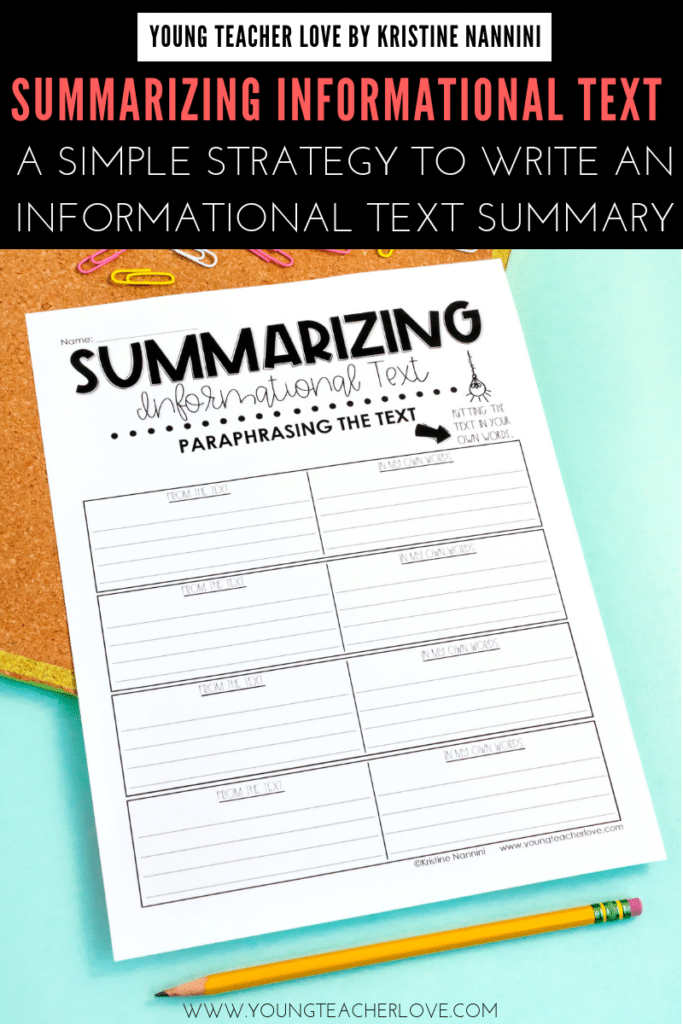
I recommend printing this paraphrasing organizer on the back of the TAAMIO graphic organizer. That way, students can flip back and forth to each page as they are putting together the pieces of their summary.
Below is an example from Cashing in on Comic Books.
Important details from the text: Even if a comic book is old and popular, it won’t be worth much if it isn’t in good condition. In order to keep it’s value, a comic book must not have any creases or tears. The pages should be free from scribbles, and the color should be vivid, not faded or yellowed.
Paraphrased: In order to be valuable, a comic book also has to be in good condition meaning it should be free from creases, scribbles, or tears and have vivid color.
*This paraphrased sentence is now ready to be used as an important or key detail in our final summary.
Continue to do this for the entire passage. You can break it down paragraph by paragraph for students so that they understand the concept.
After students have identified and paraphrased the important or key details that support the main idea, they now have the I completed in TAAMIO.
O: Follow the text structure
Students should understand that the text structure of a text will help them organize their summary. A summary should be organized using the same structure as the original piece. For example, if the text has a sequence text structure, the summary should state the main idea and present the key details in chronological order. Also, students should use transition words in their summaries that help readers understand how the events are connected or related.
Our original passage, Cashing in on Comic Books, uses a description text structure. Description passages often use examples or descriptive words to explain a topic, concept, or idea. Description passages often use transition words like: for example, another reason, also, etc. Students should use similar transition words as the original text to help connect the important details of their summary. You can see in the picture below that there is space on the graphic organizer for students to identify the text structure and to write any necessary transition words.

If your students need additional help practicing text structure, you can check out my Text Structure Differentiated Passages and Questions ( coming soon… ).
Put it all together
Now that students have completed each part of TAAMIO , they can write their summary.
Make sure you visually break down each step for students so they understand:
In this text ( T ), the author ( A ) explains ( A ) that a comic book’s rarity, population, and condition are the main factors that determine its value ( M ). For example ( O ), a rare Superman comic sold for $3.2 million because there are only 50-100 copes that exist ( I ). A comic might be popular if it introduces a new character, has a connection to a movie, or has drawings by a well-loved artist ( I ). I n order to be valuable, a comic book also ( O ) has to be in good condition meaning it should be free from creases, scribbles, or tears and have vivid color ( I ).

While helping students put together all the steps to write their summary, make sure you emphasize what makes a good summary. You can refer to the anchor chart below to help teach this concept.

Once students feel comfortable and are ready to practice on their own, you can pass out the checklists for students to use to check their own summaries. These checklists are found in my freebie found here .

Now that students understand each step of writing an informational text summary, you have to let students practice this skill. The more students practice, the better they will get at writing informational text summaries.
These free resources are now digital! Use them to help teach this lesson digitally or through distance learning.
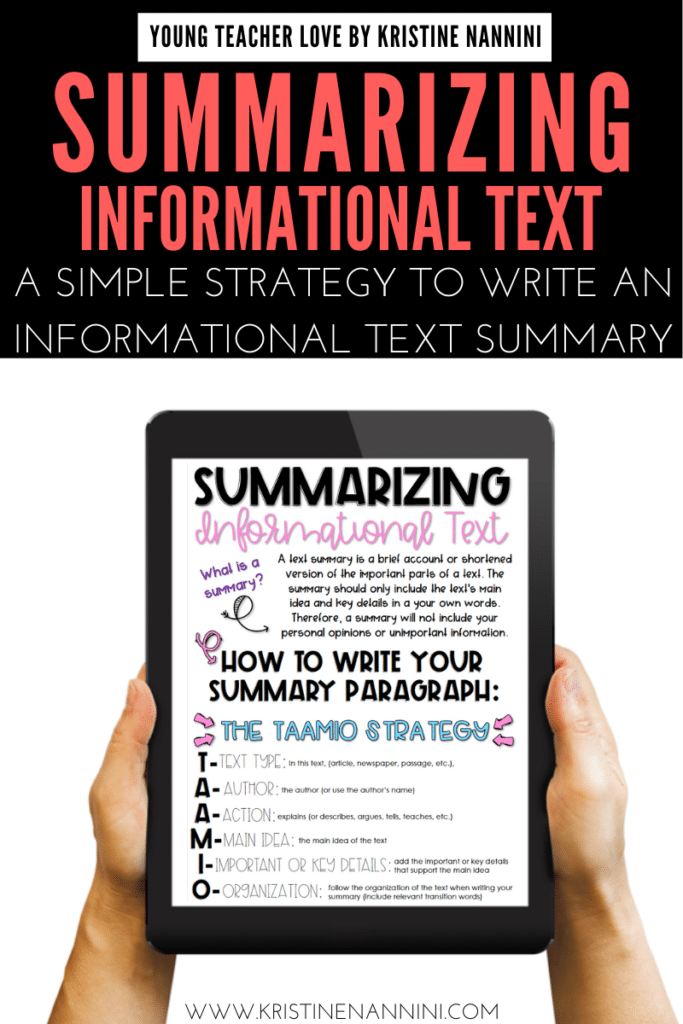
Click HERE or the button below to check out my Summarizing Informational Text Differentiated Passages and Questions.
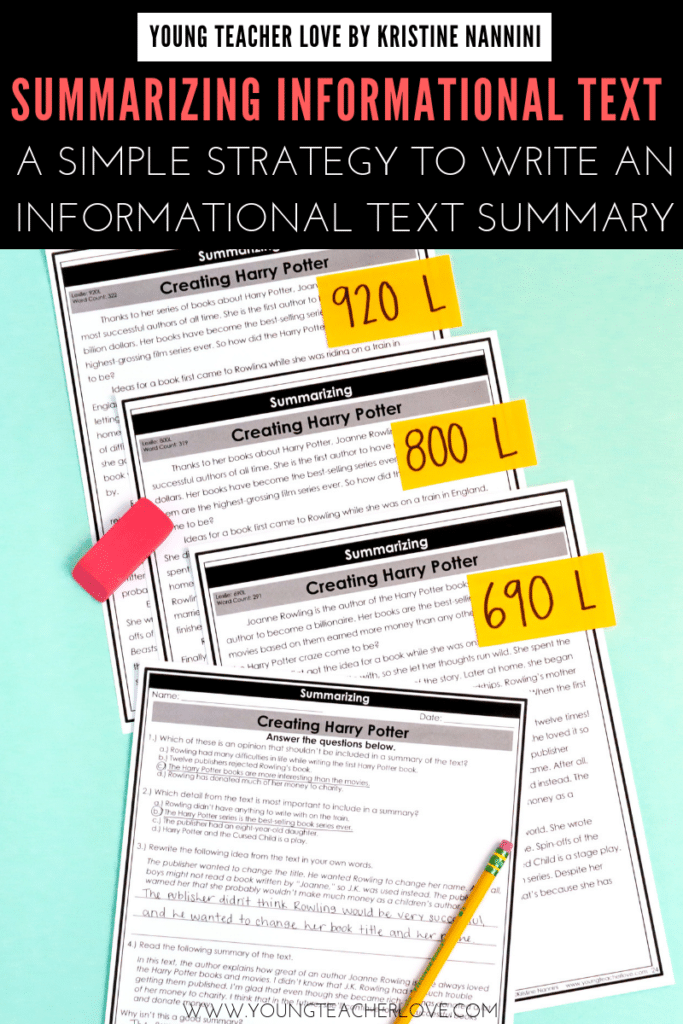
This resource is now bundled.
This first bundle includes 10 Informational Text Differentiated Passages and Questions. Click HERE or the button below.

This bundle includes 20 total resources- 10 Informational Text and 10 Fiction Text Differentiated Passages and Questions. Click HERE or the button below.

Thank you for all this! You have provided so much information. When I return to work after my baby bonding time is finished, I will be returning to a different grade level. Before I only taught math, but now I’ll have to teach writing too! Thanks for your help and I’ll be purchasing some of your TPT stuff soon! :)
Thank you so much, Steffanie! I appreciate your kind words! Enjoy those sweet baby snuggles! They’re the BEST!
Thank you so much.This is very useful for my class.
I love hearing that! Thank you!
Leave a Reply Cancel reply
Your email address will not be published. Required fields are marked *
Review Cart
No products in the cart.

Have a language expert improve your writing
Run a free plagiarism check in 10 minutes, generate accurate citations for free.
- Knowledge Base
- Working with sources
- How to Write a Summary | Guide & Examples
How to Write a Summary | Guide & Examples
Published on November 23, 2020 by Shona McCombes . Revised on May 31, 2023.
Summarizing , or writing a summary, means giving a concise overview of a text’s main points in your own words. A summary is always much shorter than the original text.
There are five key steps that can help you to write a summary:
- Read the text
- Break it down into sections
- Identify the key points in each section
- Write the summary
- Check the summary against the article
Writing a summary does not involve critiquing or evaluating the source . You should simply provide an accurate account of the most important information and ideas (without copying any text from the original).
Table of contents
When to write a summary, step 1: read the text, step 2: break the text down into sections, step 3: identify the key points in each section, step 4: write the summary, step 5: check the summary against the article, other interesting articles, frequently asked questions about summarizing.
There are many situations in which you might have to summarize an article or other source:
- As a stand-alone assignment to show you’ve understood the material
- To keep notes that will help you remember what you’ve read
- To give an overview of other researchers’ work in a literature review
When you’re writing an academic text like an essay , research paper , or dissertation , you’ll integrate sources in a variety of ways. You might use a brief quote to support your point, or paraphrase a few sentences or paragraphs.
But it’s often appropriate to summarize a whole article or chapter if it is especially relevant to your own research, or to provide an overview of a source before you analyze or critique it.
In any case, the goal of summarizing is to give your reader a clear understanding of the original source. Follow the five steps outlined below to write a good summary.
Scribbr Citation Checker New
The AI-powered Citation Checker helps you avoid common mistakes such as:
- Missing commas and periods
- Incorrect usage of “et al.”
- Ampersands (&) in narrative citations
- Missing reference entries

You should read the article more than once to make sure you’ve thoroughly understood it. It’s often effective to read in three stages:
- Scan the article quickly to get a sense of its topic and overall shape.
- Read the article carefully, highlighting important points and taking notes as you read.
- Skim the article again to confirm you’ve understood the key points, and reread any particularly important or difficult passages.
There are some tricks you can use to identify the key points as you read:
- Start by reading the abstract . This already contains the author’s own summary of their work, and it tells you what to expect from the article.
- Pay attention to headings and subheadings . These should give you a good sense of what each part is about.
- Read the introduction and the conclusion together and compare them: What did the author set out to do, and what was the outcome?
To make the text more manageable and understand its sub-points, break it down into smaller sections.
If the text is a scientific paper that follows a standard empirical structure, it is probably already organized into clearly marked sections, usually including an introduction , methods , results , and discussion .
Other types of articles may not be explicitly divided into sections. But most articles and essays will be structured around a series of sub-points or themes.
Now it’s time go through each section and pick out its most important points. What does your reader need to know to understand the overall argument or conclusion of the article?
Keep in mind that a summary does not involve paraphrasing every single paragraph of the article. Your goal is to extract the essential points, leaving out anything that can be considered background information or supplementary detail.
In a scientific article, there are some easy questions you can ask to identify the key points in each part.
If the article takes a different form, you might have to think more carefully about what points are most important for the reader to understand its argument.
In that case, pay particular attention to the thesis statement —the central claim that the author wants us to accept, which usually appears in the introduction—and the topic sentences that signal the main idea of each paragraph.
The only proofreading tool specialized in correcting academic writing - try for free!
The academic proofreading tool has been trained on 1000s of academic texts and by native English editors. Making it the most accurate and reliable proofreading tool for students.

Try for free
Now that you know the key points that the article aims to communicate, you need to put them in your own words.
To avoid plagiarism and show you’ve understood the article, it’s essential to properly paraphrase the author’s ideas. Do not copy and paste parts of the article, not even just a sentence or two.
The best way to do this is to put the article aside and write out your own understanding of the author’s key points.
Examples of article summaries
Let’s take a look at an example. Below, we summarize this article , which scientifically investigates the old saying “an apple a day keeps the doctor away.”
Davis et al. (2015) set out to empirically test the popular saying “an apple a day keeps the doctor away.” Apples are often used to represent a healthy lifestyle, and research has shown their nutritional properties could be beneficial for various aspects of health. The authors’ unique approach is to take the saying literally and ask: do people who eat apples use healthcare services less frequently? If there is indeed such a relationship, they suggest, promoting apple consumption could help reduce healthcare costs.
The study used publicly available cross-sectional data from the National Health and Nutrition Examination Survey. Participants were categorized as either apple eaters or non-apple eaters based on their self-reported apple consumption in an average 24-hour period. They were also categorized as either avoiding or not avoiding the use of healthcare services in the past year. The data was statistically analyzed to test whether there was an association between apple consumption and several dependent variables: physician visits, hospital stays, use of mental health services, and use of prescription medication.
Although apple eaters were slightly more likely to have avoided physician visits, this relationship was not statistically significant after adjusting for various relevant factors. No association was found between apple consumption and hospital stays or mental health service use. However, apple eaters were found to be slightly more likely to have avoided using prescription medication. Based on these results, the authors conclude that an apple a day does not keep the doctor away, but it may keep the pharmacist away. They suggest that this finding could have implications for reducing healthcare costs, considering the high annual costs of prescription medication and the inexpensiveness of apples.
However, the authors also note several limitations of the study: most importantly, that apple eaters are likely to differ from non-apple eaters in ways that may have confounded the results (for example, apple eaters may be more likely to be health-conscious). To establish any causal relationship between apple consumption and avoidance of medication, they recommend experimental research.
An article summary like the above would be appropriate for a stand-alone summary assignment. However, you’ll often want to give an even more concise summary of an article.
For example, in a literature review or meta analysis you may want to briefly summarize this study as part of a wider discussion of various sources. In this case, we can boil our summary down even further to include only the most relevant information.
Using national survey data, Davis et al. (2015) tested the assertion that “an apple a day keeps the doctor away” and did not find statistically significant evidence to support this hypothesis. While people who consumed apples were slightly less likely to use prescription medications, the study was unable to demonstrate a causal relationship between these variables.
Citing the source you’re summarizing
When including a summary as part of a larger text, it’s essential to properly cite the source you’re summarizing. The exact format depends on your citation style , but it usually includes an in-text citation and a full reference at the end of your paper.
You can easily create your citations and references in APA or MLA using our free citation generators.
APA Citation Generator MLA Citation Generator
Finally, read through the article once more to ensure that:
- You’ve accurately represented the author’s work
- You haven’t missed any essential information
- The phrasing is not too similar to any sentences in the original.
If you’re summarizing many articles as part of your own work, it may be a good idea to use a plagiarism checker to double-check that your text is completely original and properly cited. Just be sure to use one that’s safe and reliable.
If you want to know more about ChatGPT, AI tools , citation , and plagiarism , make sure to check out some of our other articles with explanations and examples.
- ChatGPT vs human editor
- ChatGPT citations
- Is ChatGPT trustworthy?
- Using ChatGPT for your studies
- What is ChatGPT?
- Chicago style
- Paraphrasing
Plagiarism
- Types of plagiarism
- Self-plagiarism
- Avoiding plagiarism
- Academic integrity
- Consequences of plagiarism
- Common knowledge
A summary is a short overview of the main points of an article or other source, written entirely in your own words. Want to make your life super easy? Try our free text summarizer today!
A summary is always much shorter than the original text. The length of a summary can range from just a few sentences to several paragraphs; it depends on the length of the article you’re summarizing, and on the purpose of the summary.
You might have to write a summary of a source:
- As a stand-alone assignment to prove you understand the material
- For your own use, to keep notes on your reading
- To provide an overview of other researchers’ work in a literature review
- In a paper , to summarize or introduce a relevant study
To avoid plagiarism when summarizing an article or other source, follow these two rules:
- Write the summary entirely in your own words by paraphrasing the author’s ideas.
- Cite the source with an in-text citation and a full reference so your reader can easily find the original text.
An abstract concisely explains all the key points of an academic text such as a thesis , dissertation or journal article. It should summarize the whole text, not just introduce it.
An abstract is a type of summary , but summaries are also written elsewhere in academic writing . For example, you might summarize a source in a paper , in a literature review , or as a standalone assignment.
All can be done within seconds with our free text summarizer .
Cite this Scribbr article
If you want to cite this source, you can copy and paste the citation or click the “Cite this Scribbr article” button to automatically add the citation to our free Citation Generator.
McCombes, S. (2023, May 31). How to Write a Summary | Guide & Examples. Scribbr. Retrieved April 1, 2024, from https://www.scribbr.com/working-with-sources/how-to-summarize/
Is this article helpful?
Shona McCombes
Other students also liked, how to paraphrase | step-by-step guide & examples, how to quote | citing quotes in apa, mla & chicago, the basics of in-text citation | apa & mla examples, unlimited academic ai-proofreading.
✔ Document error-free in 5minutes ✔ Unlimited document corrections ✔ Specialized in correcting academic texts

Write an objective summary of informational text
I understand what an objective summary is and can provide one for a given text.
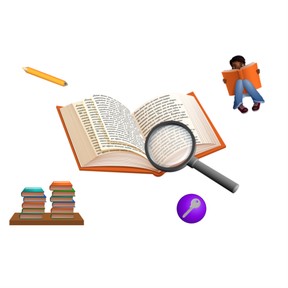
8,000 schools use Gynzy
92,000 teachers use Gynzy
1,600,000 students use Gynzy
In this lesson, students will be introduced to the idea of objectivity and how to write an objective summary of informational text. Students will learn how to properly organize and write an objective summary and the steps to follow to further strengthen their writing. Students will be guided through a web activity, in which they will read an outside article source and analyze a model objective summary. They will then go on to independently completing their own objective summary based on an article they read. The lesson will end with an activity in which they will create an objective summary on a topic of their choice and fill out a diagram organizing their information.
CCSS.ELA-Literacy.RI.6.2 CCSS.ELA-Literacy.RI.7.2 CCSS.ELA-Literacy.RI.8.2
Learning objective
Students will be able to write an objective summary of informational text by taking proper notes, using summary verbs, determining the central idea, and organizing all their details into a factual summary
Introduction
Review what it means for something to be Objective and introduce the concept of Objective summaries to students. Have students watch a video about creating objective summaries and write 3 new facts they learned about objective summaries.
Instruction
Understand the proper meaning of objective and objective summaries. Learn different characteristics of objective summaries, and understand the main goals of them. Read, understand, and apply the 4 steps to writing objective summaries. Show students how to properly format an objective summary by following this general guideline: Title, Author, Verb, and Central Idea. Teach students about the various summary verbs they can use to convey their information, and have them slide to reveal different examples. Give students the ability to evaluate their summaries by showing them the 5 questions they should always ask themselves to be sure their objective summary is written correctly. Have students apply knowledge learned by reading a sample article and analyzing a model objective summary, and then creating an objective summary of their own based on a web article.
Students respond to ten questions in which they review the requirements of objective summaries, and identify the required elements to stay objective in a summary.
Students will create their own objective summary about a topic they find interesting. They will locate an informational text of their choice. They will complete and fill out a diagram organizing the information and write an objective summary about it, sharing their final summary with their classmates. Read our blog post to learn more about reading comprehension exercises !
Instruction materials
Students will need the following for activities in the lesson: - notebook - pencils - computer or electronic device for web activities
The online teaching platform for interactive whiteboards and displays in schools
Save time building lessons
Manage the classroom more efficiently
Increase student engagement
Discover more !
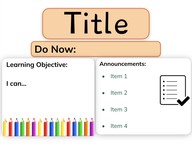
About Gynzy
Gynzy is an online teaching platform for interactive whiteboards and displays in schools.
With a focus on elementary education, Gynzy’s Whiteboard, digital tools, and activities make it easy for teachers to save time building lessons, increase student engagement, and make classroom management more efficient.
Get started with Gynzy
Write a Summary of an Informative Text
Identify the central ideas in a text and use them to write a clear and coherent summary in Google Docs.
Example outcome
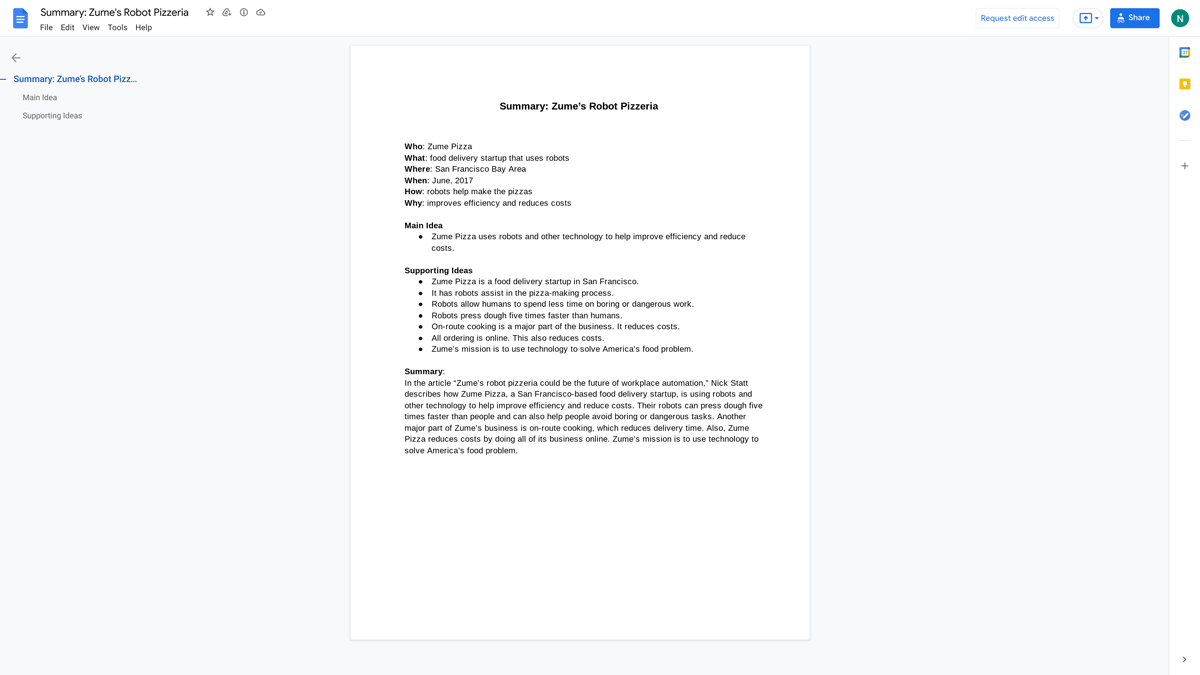
- Teaching Materials
Time to complete
access_time 45—90 minutes
Digital tools
- Communication
- Document formatting
- Effective communication
- Identify relevant data
- Internet search
- Organizing data
- Writing strategies
Have a thesis expert improve your writing
Check your thesis for plagiarism in 10 minutes, generate your apa citations for free.
- Knowledge Base
- Working with sources
- How to Write a Summary | Guide & Examples
How to Write a Summary | Guide & Examples
Published on 25 September 2022 by Shona McCombes . Revised on 12 May 2023.
Summarising , or writing a summary, means giving a concise overview of a text’s main points in your own words. A summary is always much shorter than the original text.
There are five key steps that can help you to write a summary:
- Read the text
- Break it down into sections
- Identify the key points in each section
- Write the summary
- Check the summary against the article
Writing a summary does not involve critiquing or analysing the source. You should simply provide an accurate account of the most important information and ideas (without copying any text from the original).
Instantly correct all language mistakes in your text
Be assured that you'll submit flawless writing. Upload your document to correct all your mistakes.

Table of contents
When to write a summary, step 1: read the text, step 2: break the text down into sections, step 3: identify the key points in each section, step 4: write the summary, step 5: check the summary against the article, frequently asked questions.
There are many situations in which you might have to summarise an article or other source:
- As a stand-alone assignment to show you’ve understood the material
- To keep notes that will help you remember what you’ve read
- To give an overview of other researchers’ work in a literature review
When you’re writing an academic text like an essay , research paper , or dissertation , you’ll integrate sources in a variety of ways. You might use a brief quote to support your point, or paraphrase a few sentences or paragraphs.
But it’s often appropriate to summarize a whole article or chapter if it is especially relevant to your own research, or to provide an overview of a source before you analyse or critique it.
In any case, the goal of summarising is to give your reader a clear understanding of the original source. Follow the five steps outlined below to write a good summary.
The only proofreading tool specialized in correcting academic writing
The academic proofreading tool has been trained on 1000s of academic texts and by native English editors. Making it the most accurate and reliable proofreading tool for students.

Correct my document today
You should read the article more than once to make sure you’ve thoroughly understood it. It’s often effective to read in three stages:
- Scan the article quickly to get a sense of its topic and overall shape.
- Read the article carefully, highlighting important points and taking notes as you read.
- Skim the article again to confirm you’ve understood the key points, and reread any particularly important or difficult passages.
There are some tricks you can use to identify the key points as you read:
- Start by reading the abstract . This already contains the author’s own summary of their work, and it tells you what to expect from the article.
- Pay attention to headings and subheadings . These should give you a good sense of what each part is about.
- Read the introduction and the conclusion together and compare them: What did the author set out to do, and what was the outcome?
To make the text more manageable and understand its sub-points, break it down into smaller sections.
If the text is a scientific paper that follows a standard empirical structure, it is probably already organised into clearly marked sections, usually including an introduction, methods, results, and discussion.
Other types of articles may not be explicitly divided into sections. But most articles and essays will be structured around a series of sub-points or themes.
Now it’s time go through each section and pick out its most important points. What does your reader need to know to understand the overall argument or conclusion of the article?
Keep in mind that a summary does not involve paraphrasing every single paragraph of the article. Your goal is to extract the essential points, leaving out anything that can be considered background information or supplementary detail.
In a scientific article, there are some easy questions you can ask to identify the key points in each part.
If the article takes a different form, you might have to think more carefully about what points are most important for the reader to understand its argument.
In that case, pay particular attention to the thesis statement —the central claim that the author wants us to accept, which usually appears in the introduction—and the topic sentences that signal the main idea of each paragraph.
Now that you know the key points that the article aims to communicate, you need to put them in your own words.
To avoid plagiarism and show you’ve understood the article, it’s essential to properly paraphrase the author’s ideas. Do not copy and paste parts of the article, not even just a sentence or two.
The best way to do this is to put the article aside and write out your own understanding of the author’s key points.
Examples of article summaries
Let’s take a look at an example. Below, we summarise this article , which scientifically investigates the old saying ‘an apple a day keeps the doctor away’.
An article summary like the above would be appropriate for a stand-alone summary assignment. However, you’ll often want to give an even more concise summary of an article.
For example, in a literature review or research paper, you may want to briefly summarize this study as part of a wider discussion of various sources. In this case, we can boil our summary down even further to include only the most relevant information.
Citing the source you’re summarizing
When including a summary as part of a larger text, it’s essential to properly cite the source you’re summarizing. The exact format depends on your citation style , but it usually includes an in-text citation and a full reference at the end of your paper.
You can easily create your citations and references in APA or MLA using our free citation generators.
APA Citation Generator MLA Citation Generator
Finally, read through the article once more to ensure that:
- You’ve accurately represented the author’s work
- You haven’t missed any essential information
- The phrasing is not too similar to any sentences in the original.
If you’re summarising many articles as part of your own work, it may be a good idea to use a plagiarism checker to double-check that your text is completely original and properly cited. Just be sure to use one that’s safe and reliable.
A summary is a short overview of the main points of an article or other source, written entirely in your own words.
Save yourself some time with the free summariser.
A summary is always much shorter than the original text. The length of a summary can range from just a few sentences to several paragraphs; it depends on the length of the article you’re summarising, and on the purpose of the summary.
With the summariser tool you can easily adjust the length of your summary.
You might have to write a summary of a source:
- As a stand-alone assignment to prove you understand the material
- For your own use, to keep notes on your reading
- To provide an overview of other researchers’ work in a literature review
- In a paper , to summarise or introduce a relevant study
To avoid plagiarism when summarising an article or other source, follow these two rules:
- Write the summary entirely in your own words by paraphrasing the author’s ideas.
- Reference the source with an in-text citation and a full reference so your reader can easily find the original text.
An abstract concisely explains all the key points of an academic text such as a thesis , dissertation or journal article. It should summarise the whole text, not just introduce it.
An abstract is a type of summary , but summaries are also written elsewhere in academic writing . For example, you might summarise a source in a paper , in a literature review , or as a standalone assignment.
Cite this Scribbr article
If you want to cite this source, you can copy and paste the citation or click the ‘Cite this Scribbr article’ button to automatically add the citation to our free Reference Generator.
McCombes, S. (2023, May 12). How to Write a Summary | Guide & Examples. Scribbr. Retrieved 25 March 2024, from https://www.scribbr.co.uk/working-sources/how-to-write-a-summary/
Is this article helpful?
Shona McCombes
Other students also liked, how to paraphrase | step-by-step guide & examples, how to quote | citing quotes in harvard & apa, apa referencing (7th ed.) quick guide | in-text citations & references.
Skip to Main Content
- My Assessments
- My Curriculum Maps
- Communities
- Workshop Evaluation
Share Suggestion
Summarizing informational text by using key ideas and details, lesson plan.
- Printer Friendly Version
- Grade Levels 4th Grade
- Related Academic Standards CC.1.2.4.A Determine the main idea of a text and explain how it is supported by key details; summarize the text. CC.1.2.4.B Refer to details and examples in text to support what the text says explicitly and make inferences. CC.1.2.4.C Explain events, procedures, ideas, or concepts in a text, including what happened and why, based on specific information in the text.
- Assessment Anchors E04.B-K.1 Key Ideas and Details
- Eligible Content E04.B-K.1.1.2 Determine the main idea of a text and explain how it is supported by key details; summarize the text.
- Competencies
In this lesson, students review the various informational nonfiction text structures. They will apply this knowledge to the skill of summarizing informational text. Students will:
- identify the components of informational nonfiction text structure.
- determine the main idea of a nonfiction text.
- identify key ideas and details of a nonfiction text.
- summarize informational nonfiction text by using repeated words.
Essential Questions
- How does interaction with text provoke thinking and response?
- How do strategic readers create meaning from informational and literary texts?
- What is this text really about?
- How do readers know what to believe in what they read, hear, and view?
- Nonfiction: Prose writing that is not fictional; designed primarily to explain, argue, instruct, or describe rather than entertain.
- Summarize: To provide a short, concise explanation of a text’s major ideas.
- Text Structure: The way a text is organized.
- Chronology: Time order
45–90 minutes/1–2 class periods
Prerequisite Skills
- copies of Weather (Usbourne Beginners, Level 2) by Catriona Clarke. Usbourne Books, 2006. Note: This book is very easy. You may wish to focus on the repeated words.
- Bald Eagles by Sandra Lee. The Child’s World, Inc., 1991.
- a variety of books in which you have identified and highlighted (with highlighter tape) important key words
- copies of a short informational nonfiction text at students’ reading level
- Teachers may substitute other books or texts to provide a range of reading and level of text complexity.
- an example of informational nonfiction text on the board/interactive whiteboard (You may wish to use a page from a science or social studies textbook.)
- student copies of Repeated Words Organizer ( L-4-3-3_Repeated Words Organizer.docx )
Related Unit and Lesson Plans
Related materials & resources.
The possible inclusion of commercial websites below is not an implied endorsement of their products, which are not free, and are not required for this lesson plan.
Formative Assessment
- During the lesson, emphasize the importance of identifying informational nonfiction text structure and summarizing to check for understanding and to recall essential information. Observe students to determine if they understand how to summarize informational nonfiction.
- Student demonstrates the ability to identify essential information in a piece of informational nonfiction (based on nonfiction text structure) and to complete a Repeated Words Organizer.
- Student accurately uses the information in the organizer to write a summary paragraph.
- Collect and use the organizers to assess students’ understanding. Provide specific feedback to each student.
Suggested Instructional Supports
Instructional procedures.
Focus question: How do we summarize informational nonfiction text?
Activate students’ prior knowledge from previous lessons. Compare literary nonfiction text organization and informational nonfiction text structure. Ask, “How are the two types of nonfiction texts different?” Have students turn to a partner and recall the different types of informational nonfiction text structures (cause/effect, problem/solution, describe and inform, question and answer). Remind students that literary nonfiction follows a story format and is organized by plot structure.
Ask, “What strategies do you use before, during, and after reading to make sure you understand what you read?” Allow time to discuss. When someone mentions “summarize,” indicate that this lesson will focus on summarizing informational nonfiction. Say, “Summarizing allows us to think about what we read and decide if it makes sense. When we summarize informational nonfiction, we choose only the most important information that helps us remember what we have read. To do that, we need to determine how the text is organized.”
Ask, “What does the word repeat mean?” ( to say or do something again ) Explain that one strategy to help summarize informational nonfiction is to find words that are repeated in the text. Say, “The author usually repeats words that are important to the topic of the text. We might call these ‘meaty’ or meaningful words. These meaty words lead us to essential information. Essential information is important information. Nonessential information is not important.”
Provide students with a copy of a short informational nonfiction text. Have students read the passage and then go back and read sentence by sentence, looking for repeated meaty words. Tell students to write the repeated words below the passage. Discuss the lists. Emphasize that words such as a, an, the , or to may be repeated many times, but that these are not meaty words. Have students analyze the repeated words and determine the topic of the text. Ask students to write the topic at the top of the page and circle it. Ask, “What is the main idea of the text?” Discuss how the repeated words helped guide the reader to the main idea.
Display a copy of informational nonfiction text on the board/interactive whiteboard. Read the text to students. Guide them through the text line by line, looking for repeated words. Circle the repeated words in the text. Ask, “Is this information essential to what the passage is about, or is it just something interesting to know?” After all the repeated words are circled, ask students to identify the topic. Next, ask students to write sentences using the repeated words. The sentences should contain an important piece of information from the text. Together, use the repeated words and essential facts to write a summary of the passage on the board/interactive whiteboard. (Use student-generated sentences if they are accurate.) Have students summarize to get the main idea.
Display the Repeated Words Organizer ( L-4-3-3_Repeated Words Organizer.docx ). Say, “Because you can’t write in your books, you will use a graphic organizer to record your information. We will complete a sample of the graphic organizer together.” Using the text you just worked with, model how that information fits into the graphic organizer.
- Write the topic in the top box.
- Write the most important repeated words in the column on the left side of the graphic organizer.
- Write key ideas and details in the center of the graphic organizer. Analyze the repeated words and key ideas/details to create a written summary.
- Write the summary in the column on the right side of the graphic organizer.
Ask students to recall how repeated words were used to summarize nonfiction text. Say, “You will be using the repeated words organizer to help you create a summary of a nonfiction text.”
Distribute copies of the Repeated Words Organizer and Weather to each student or pairs of students. Other informational nonfiction texts can be used here as well.
Say, “Read the passage and as you are reading, write the repeated words on the left side of your organizer. Determine the topic of the text and write it in the box at the top of the organizer. Find key ideas and details as signaled by the repeated words. Write the key ideas and details in the center column of the graphic organizer. Then review the information on your organizer and write a summary in the column on the right.”
Move around the room as students complete the organizer. Ask, “How does finding repeated words and summarizing the text help you increase your understanding of what you read?” Determine if reteaching is needed. Collect students’ organizers for assessment.
- If additional practice is needed, have small groups summarize an experience they had recently.
- For students who are ready to move beyond the standard, give them a Repeated Words Organizer and a topic. Have them fill in the organizer based on the topic. Then tell them to write a short nonfiction piece that reflects the repeated words and important ideas stated in the organizer. Students may find it necessary to research their topic first. You might use well-written passages as samples for the rest of the class.
Related Instructional Videos
- Skip to main content
Stellar Teaching Co.
Engaging Resources for Teaching Literacy
By Sara Marye Leave a Comment
3 Reading Strategies to Help Students Summarize Nonfiction Text
Summarizing nonfiction.
This might be one of the most challenging reading skills/standards that we have to teach our students. I know when I was in the classroom I always dreaded the part of our nonfiction unit when it came time to learn how to summarize nonfiction texts.
My students loved reading nonfiction and for the most part we did great with identifying text features and figuring out the main idea and they were rockstars at asking questions and figuring out the text structure.
But summarizing nonfiction?
That was a challenge.
I never really LOVED teaching nonfiction.
And I think part of the reason why it was challenging for my students is because summarizing in general is a very higher level skill and it requires A LOT from students.
In order for students to successfully summarize, they need to be able to determine importance, synthesize ideas, understand the author’s purpose, Identify the main idea and key details … just to name a few.
But then they also have to be able to write a summary, which means they need to be able to write in complete sentences, they need to be able to paraphrase, they need be concise in their writing and they need to be able to write a summary in a way that makes sense with the text.
So if you have ever felt like teaching students to summarize nonfiction is challenging, you’re not alone. It definitely is.
But there are also things that we can do to help our students experience success when it comes to summarizing nonfiction and today I want to share with you 3 strategies that will help you teach nonfiction summary to your students.
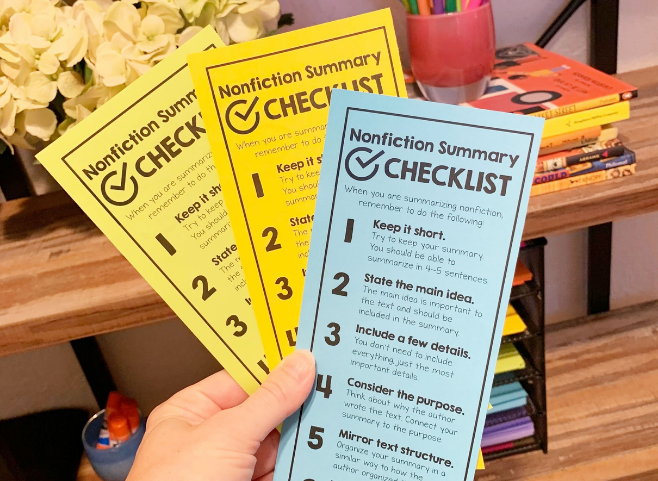
Characteristics of a nonfiction summary:
Now before I actually teach my students strategies that will help them summarize nonfiction texts, I like to teach them what a summary is (and what it isn’t) and make sure they they understand the end goal when they are asked to summarize a nonfiction text.
One of the ways I do this is by teaching them the attributes or characteristics of a nonfiction summary. That way they know that no matter WHAT strategy they choose to use, they have a pretty solid understanding of what their summary should look like.
Here are the six things that I tell my students to keep in mind when writing a nonfiction summary.
- Keep it short (summaries should be around around 4-5 sentences).
- Clearly state the main idea of the text.
- Only include a few of the most important details.
- Make sure you consider the author’s purpose.
- Your summary should mirror the structure (organization) of the text.
- Use your own words when writing a summary.
Sentence Writing Routine Free Sample
If your students struggle to write at the sentence level, this new literacy routine is going to be your new best friend. Each day of the week your students will engage in a quick (yet effective) sentence writing task that will help them become more confident and creative writers. Say goodbye to fragments and boring sentences, and say hello to complex sentences with lots of details!
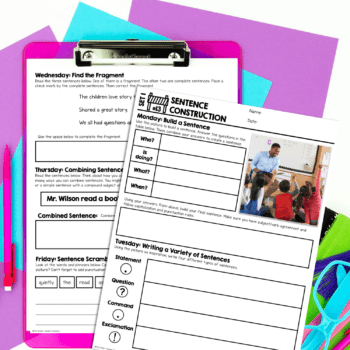
Now, let’s talk strategies!
Strategy 1: tamko.
With this strategy, each letter stands for a different element of the summary. I kind of compare it to the nonfiction version of the SWBST strategy. In reality, it’s just a bunch of random letters, but when you teach it to students it gives them a specific formula that will help them summarize nonfiction.
I really like teaching this strategy to students because it helps them craft the first introductory sentence for their summary. And I have found that very first sentence can be one of the hardest ones to write. If students know how to start their summary, it will be a lot easier for them to finish.
So let’s breakdown what T-A-M-K-O stands for:
- The very first thing you want students to do is state the title of the text and explain the type of text it is.
- Example: In the book Kids vs. Plastic…
- In the example you can see that students write the title (Kids vs. Plastic) and they explain it’s an actual book.
- In the article ___________
- After reading the passage ____________
- In the magazine ___________
- On the website ____________
- The next thing students will do is name the author and the verb that describes the purpose for writing.
- Example: … Julie Beers explains…
- This is a continuation of the first sentence.
- Sometimes the author’s name isn’t always give so students can just say “the author”.
- The author describes
- Mr. Jackson shares his opinion
- Emily Clarkson informs her readers
- The last thing students will do to write their introductory sentence is state the main idea or the main topic of the text (whatever makes the most sense in their sentence).
- Example: …the negative impact plastic has on the environment.
- It’s important that students realize the TAM form a complete sentence so the topic needs to be written in a way that will make the sentence complete.
- Sometimes it will be one or two words and other times it will be a longer more descriptive phrase.
This is how their summary would begin using TAM.
In the book Kids vs. Plastic, Julie Beers explains the negative impact plastic has on the environment.
I have found that giving kids this formula to help them get started with their summary can be really helpful and effective.
The next two letters of the TAMKO strategy are a little less formulaic and provide general guidelines/reminders for students to keep in mind when summarizing.
- The next thing students need to do is include 2-3 key details that support their introductory sentence.
- If the author is describing, then they should find 2-3 details that help describe the topic.
- If the author is explaining, then they should find 2-3 details that explain the process or steps or problem and solution the author is highlighting.
- If the author is trying to persuade the reader, then they should find 2-3 of the most persuasive details the author included in the text.
- This step can be a little bit challenging for students, but I think it’s important to let students feel empowered in their ability to select relevant details to include in their summaries.
- Remind students to organize their summary in the same way as the author organized the text.
- This one is really helpful and can guide the rest of their summary.
- If students can identify the text structure the author used to write the text, then they can organize and set up their summary in the same way.
Summarizing can often feel feel really overwhelming for students, especially if they aren’t good writers or if they lack confidence in their reading comprehension, but with this strategy, you are making summarizing almost fool-proof. Students are given the exact words and framework to help them begin their summary.
And anytime we can help kids feel more confident in their reading the better.
Strategy #2: Asking the 5W and H Questions
This strategy can be easy for students to use because it connects to something students already know how to do… and that is asking the 5W + H questions.
More than likely, if you are an upper elementary reading teacher, then your students at some point have been exposed to the idea of asking the questions who, what, when, where, why, and how for the text they are reading.
And there is so much benefit to being able to connect a reading strategy to something students already know how to do. Basically with this strategy you are teaching students to ask specific 5W + H questions for the nonfiction text and then using their answers to help them summarize a nonfiction text.
So you could teach this strategy at the most basic level and that would look something like this:
Give your students the following questions to ask and answer for the nonfiction text they are reading:
- Who is the text about?
- What events are happening (to the person) in the text?
- When did the events take place?
- Where does the event in the text take place?
- Why is this event important?
- How did this event happen?
But sometimes these typical who, what, when, where, why questions don’t match up with EVERY single text. For example, not every nonfiction text you give your students will have a WHO has the subject or they might not mention a specific location.
The good news is that these questions can still help students summarize nonfiction. But instead of teaching students specific questions, you just want to teach them the question stems and let them customize the questions based on the text they are reading.
So here some different questions your students could ask for each of the stems:
- Who wrote the text?
- Who is the intended audience for the text?
- Who is impacted by the problem in the text?
- What happens in the text?
- What topic is the author writing about?
- What details does the author include?
- What lesson is the author trying to teach?
- When was this text written?
- When did the problem become discovered?
- Where does this event take place?
- Where is the author from?
- Why is this event/person/topic signifiant?
- Why did the author write this text?
- Why is this topic important to read about?
- How did the author organize the information in the text?
- How do these details connect to my personal life?
- How did this event take place?
- How does the author suggest we solve the problem?
So remember that the goal is not just for students to ask and answer the basic or first who, what, when, where, why, and how question that comes to mind, but to critically think about the types of questions they are asking and then use their answers to help them craft a summary.
If students are actively asking and answering questions (and using these 5W +H stems) they will discover all the key details that will help them summarize the main points of the text.
Strategy #3 – Text Structure Summary
This one should be no surprise to y’all since you know I’m such a fan of teaching students how to identify and understand nonfiction text structure.
Nonfiction text structure can give students a road map that will not only help students understand the text, but it can also give them a framework that will help them summarize the text.
Nonfiction summaries should mirror the structure of the text… and if we clearly explain that to our students, they have just one more strategy in their toolbox that will help them summarize nonfiction text.
When I’m teaching students to summarize nonfiction using the text structure, I have them think about their summary in three parts:
- In the beginning of their summary, they want to state the main topic of the text (which should also hint at the text structure)
- Example 1: In this text, the author shares the similarities and differences between crocodiles and alligators.
- Example 2: Pollution in the ocean is becoming a huge problem , but a group of students from New York have come up with a creative solution .
- As you can see in both of those examples, the organizational structure is mentioned.
- In the middle of their summary, students should include 2-3 details from the text.
- And the important thing to keep in mind is that they should share them in the same way the author organized the text.
- So if you go back to Example 1 , if it is a compare and contrast text on crocodiles and alligators, then their summary might includes the most significant similarity and the most significant difference between the two animals.
- If you go back to Example 2 , if it is a problem and solution text on ocean pollution, then their summary might include 1-2 sentences that state the problem and 1-2 sentences that explain the solution presented in the text.
- And then finally, you want to teach students to end their summary with a concluding statement that will reiterate the main idea and text structure. It will be very similar to their introduction.
- Example 1: So while there are many similarities between alligators and crododiles, this text also highlights their differences.
- Example 2: The students from New York are making a big impact on a global problem with their creative solution to ocean pollution.
Now this strategy is a lot more open-ended then the TAMKO strategy, but I think it’s important to teach students a wide range of strategies. Some of your students will gravitate towards the structure of TAMKO and others will like the flexibility of a text structure summary.
I like teaching an open-ended approach like the text structure summary strategy because then your students can make it work for almost any text…. Sometimes when we teach a very scripted formula like TAMKO, it can be hard for students to apply that to a text that doesn’t meet all the criteria.
For example, if you only teach the TAMKO strategy, but students are reading a text that doesn’t include the author’s name or maybe it doesn’t have a specific title, students might struggle to adapt that strategy to summarize the text…. But with a strategy that is a little more open-ended like teaching them how to summarize using text structure, they have options to use when it comes to their independent reading.
Your Next Steps:
Ok, now that you have three strategies to help you teach nonfiction summary, I’m curious which one will you start with. Remember, with any strategy you teach your students, the goal isn’t for them to MASTER a specific strategy. The goal is for them to understand the text and feel confident in their ability to apply a specific reading skill – in this case summarizing the text.
Hopefully one (or more) of these strategies will help.
Before you go, be sure to grab your free Nonfiction Summary Checklist (below) and if you’re looking for more strategies and resources to help you teach nonfiction summary, check out this bundle of resources on TPT .
Happy Teaching!
Small Group Lesson – Inferring Character Traits
Are you ready to get started with small group lessons, but not exactly sure what to do with your students once you get them to your small group table? I’ve been there. One of the things that helped me with my small group lessons was having a super simple framework that I could use for my small group lessons no matter the level of my students or the focus for our lesson.
When it comes to teaching small groups, I like to use what I call the 4T Model: Target, Teach, Tackle, Transfer.
👇 Grab this free download to learn more about how you can use the 4T Model with your small groups.
In this free download, you’ll get: • A teacher guide to explain the 4T model • Lesson plan template + sentence starts • Sample lesson + materials for inferring character traits
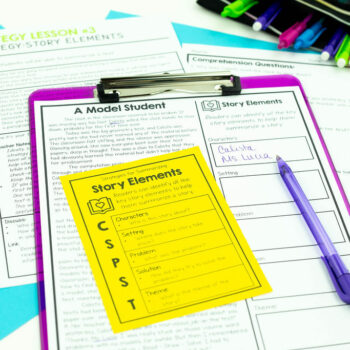
Check out these products on TPT!
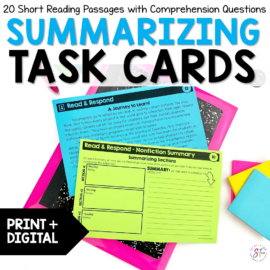
Want Even More?
You’ll love these related posts!
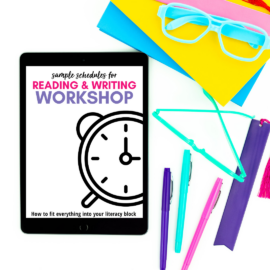
Reader Interactions
Leave a comment cancel reply.
You must be logged in to post a comment.
Grab Your FREE Gift!
Word Of The Day: Context Clue Routine
With this freebie, you'll get everything you need to get started with word of the day in your classroom. You'll get all the student and teacher materials for five days. Word of the day will help your students become experts at using context clues.
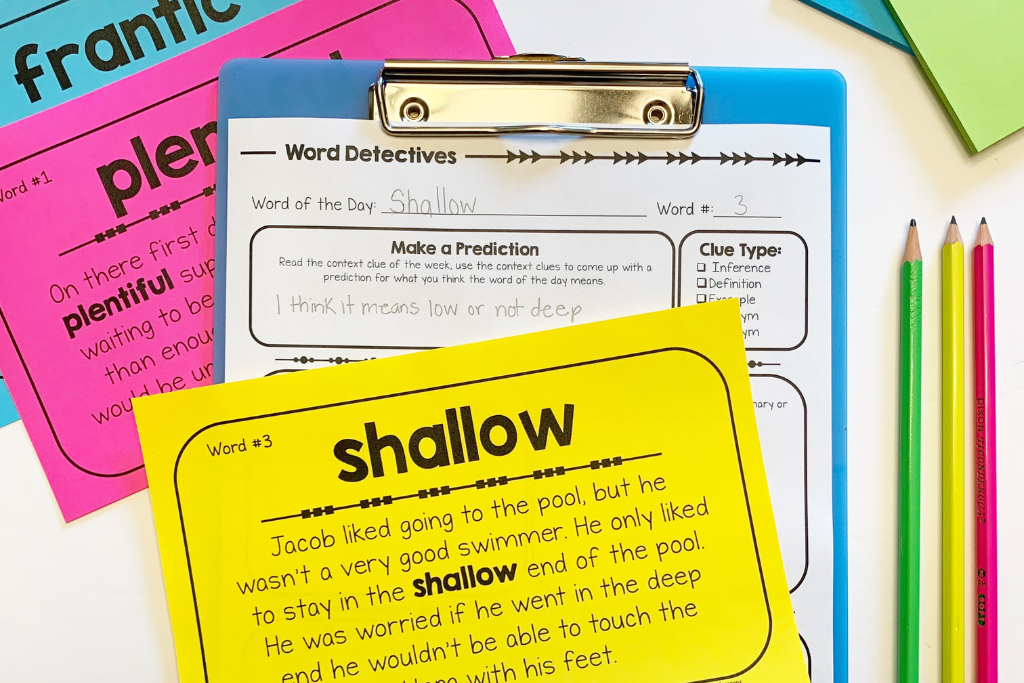
Stellar Teacher Podcast
SUBSCRIBE & LISTEN HERE
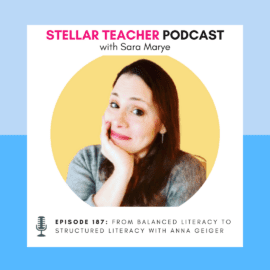
From Balanced Literacy to Structured Literacy With Anna Geiger

Don’t Let Grammar Be the Star of Your Writing Block! Do This Instead
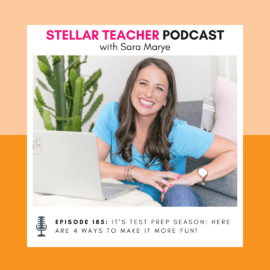
It’s Test Prep Season: Here Are 4 Ways to Make It More FUN!
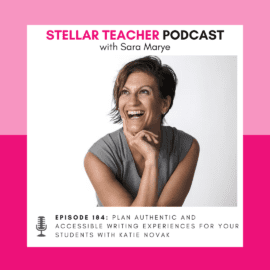
Plan Authentic and Accessible Writing Experiences for Your Students With Katie Novak

Free private podcast!
The Confident Writer System Series
In less than 90 minutes, you'll learn quick and easy ways that will transform your upper elementary student's writing.
Join our membership!
The Stellar Literacy Collective
You didn’t become a teacher to spend your rare free time scrolling Pinterest and searching on Google. Trust me friend, I have been there. That’s why this membership was created. When you join, you receive countless pre-planned resources without sacrificing engagement, rigor, and effectiveness. That means less planning and more teaching. Beyond the resources, you’ll gain a community of like-minded teachers. Are you ready to level up your instruction and maybe even find a new teacher bestie?
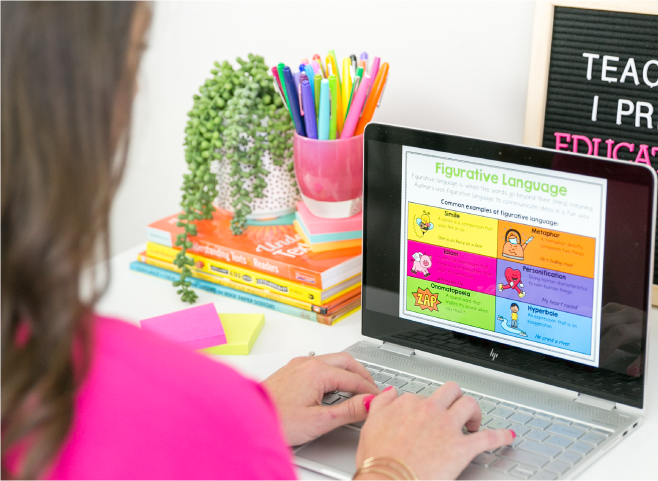
Follow Me Here
I’m Sara, your literacy lovin’ mentor and cheerleader.
With over a decade of experience working as a classroom teacher and school administrator, I understand the joys and challenges of teaching. That’s why I’m on a mission to make an impact by serving stellar upper elementary teachers just like you. Get ready, because I’m pulling out all the stops to ensure that you have the tools and confidence you need to build a literacy block that you’re proud of. One that excites you and your students while also meeting the standards. Oh yes, it’s totally possible to have both!

IMAGES
VIDEO
COMMENTS
Are you wondering what makes a summary objective?Do you want to know step-by-step how to write an objective summary?Then this short video is for you!LINKS:Te...
Focus on Factual Statements. An important element of an objective summary is avoiding the use of your own opinions — and sticking only to the factual statements. If you want to make your objective summary worth reading, start with the core thesis in one sentence. A perfect, strong opening sentence will have three main elements: who is the ...
If we break down the process of writing a summary into a few simpler steps, in order to write an objective summary you merely have to: Read the text ; Identify supporting details; Determine a ...
not exactly, no. the main idea (and the text) can be as biased or opiniated as the writer would like- it is their writing, after all. an objective summary, however, is an unbiased, brief statement that removes needless details or formalities, leaving the bare bones of the writing. however, there are several different types of summaries, which ...
Step 2: Draft a concise opening sentence stating the main idea. Effective objective summaries immediately orient readers in the opening sentence. It should establish topics and themes. So, review your notes and write a concise declarative statement encapsulating the central topic and key takeaway.
How to Write Your Summary Paragraph: T - Text Type: In this text, (article, newspaper, passage, etc.) A - Author: the author (or use the author's name) A - Action: explains (or describes, argues, tells, teaches, etc.) M - Main Idea: write the main idea of the text. I - Important or Key Details: add the important or key details that ...
written in the text. Instead, it only includes information that comes from the text. Writing objective summaries can help you understand texts that you read and identify the most important information in the text. Moreover, writing objective summaries can help you improve your writing skills! To write an objective summary, follow the ...
Table of contents. When to write a summary. Step 1: Read the text. Step 2: Break the text down into sections. Step 3: Identify the key points in each section. Step 4: Write the summary. Step 5: Check the summary against the article. Other interesting articles. Frequently asked questions about summarizing.
Read, understand, and apply the 4 steps to writing objective summaries. Show students how to properly format an objective summary by following this general guideline: Title, Author, Verb, and Central Idea. Teach students about the various summary verbs they can use to convey their information, and have them slide to reveal different examples.
Here are some steps you can follow to create an objective summary: Start by reading the text in its entirety, making sure you understand the main ideas and key details. Identify the main topic or idea, and write this down in a sentence or two. Pick out the most important supporting details and write them down.
An objective summary is a brief description of a document, video or other piece of media. The summary quickly describes the main thesis of the work being summarized, along with a few key supporting points covered in the document. The objective summary allows a reader to assess a piece of media quickly and decide if they want to examine it in full.
Your summary should be written using your own words. Present the main ideas objectively, avoiding your own opinion and thoughts about the work. Avoid including direct quotes from the work within your summary. Rather, present the main points in your own words. Close your summary by restating an overview of the work in one sentence.
An objective summary is useful in educational and professional settings for summarizing the essence of a text. With this summary, you can help direct your reader to the most important information. Understanding the steps to follow when creating an objective summary can help you improve your writing skills.
Determine which of the facts will be included and the appropriate order. Complete the summary. Have students think-pair-share with a partner about what needs to be included in an efffective summary. Use the rubric for informational text summary and evaluate the effectiveness of the class summary. Sessions 4-5. 5.
In this lesson, you'll learn how to write a summary of informative text in a digital document to improve your understanding of summary writing online. Identify the central ideas in a text and use them to write a clear and coherent summary in Google Docs.
To create an objective summary, follow these steps: 1) Read the story, 2) Identify important parts, 3) Remove non-essential details, and 4) Write a short paragraph using your own words. Once you've got an objective summary, then you can bring opinions back in for your analysis. Created by David Rheinstrom.
Quest 5: Part One-Students will read an informational text article and write an objective summary and an incorrect objective summary (one that includes opinions, thoughts, and judgements). Download Includes: Link to a Google Slides Download and Google Doc version . Links to informational text articles, the podcast, and news story. PDF Versions
Table of contents. When to write a summary. Step 1: Read the text. Step 2: Break the text down into sections. Step 3: Identify the key points in each section. Step 4: Write the summary. Step 5: Check the summary against the article. Frequently asked questions.
Analyze the repeated words and key ideas/details to create a written summary. Write the summary in the column on the right side of the graphic organizer. Ask students to recall how repeated words were used to summarize nonfiction text. Say, "You will be using the repeated words organizer to help you create a summary of a nonfiction text ...
RI.8.2 Determine a central idea of a text and analyze its development over the course of the text, including its relationship to supporting ideas; provide an objective summary of the text. RI.8.10 By the end of the year, read and comprehend literary nonfiction at the high end of the grades 6-8 text complexity band independently and proficiently.
Here are the six things that I tell my students to keep in mind when writing a nonfiction summary. Keep it short (summaries should be around around 4-5 sentences). Clearly state the main idea of the text. Only include a few of the most important details. Make sure you consider the author's purpose.
Instructions: Choose an answer and hit 'next'. You will receive your score and answers at the end. question 1 of 3. When writing an objective summary, you must include the central idea of the text ...
This objective summary worksheet pack is a great tool for helping your class expand their understanding of this text type. It contains five different summary writing templates that are each designed to create an accessible and engaging structure for students to follow. There are frames focused paraphrasing, paragraphing and even a frame with sentence prompts. These varied options mean you have ...